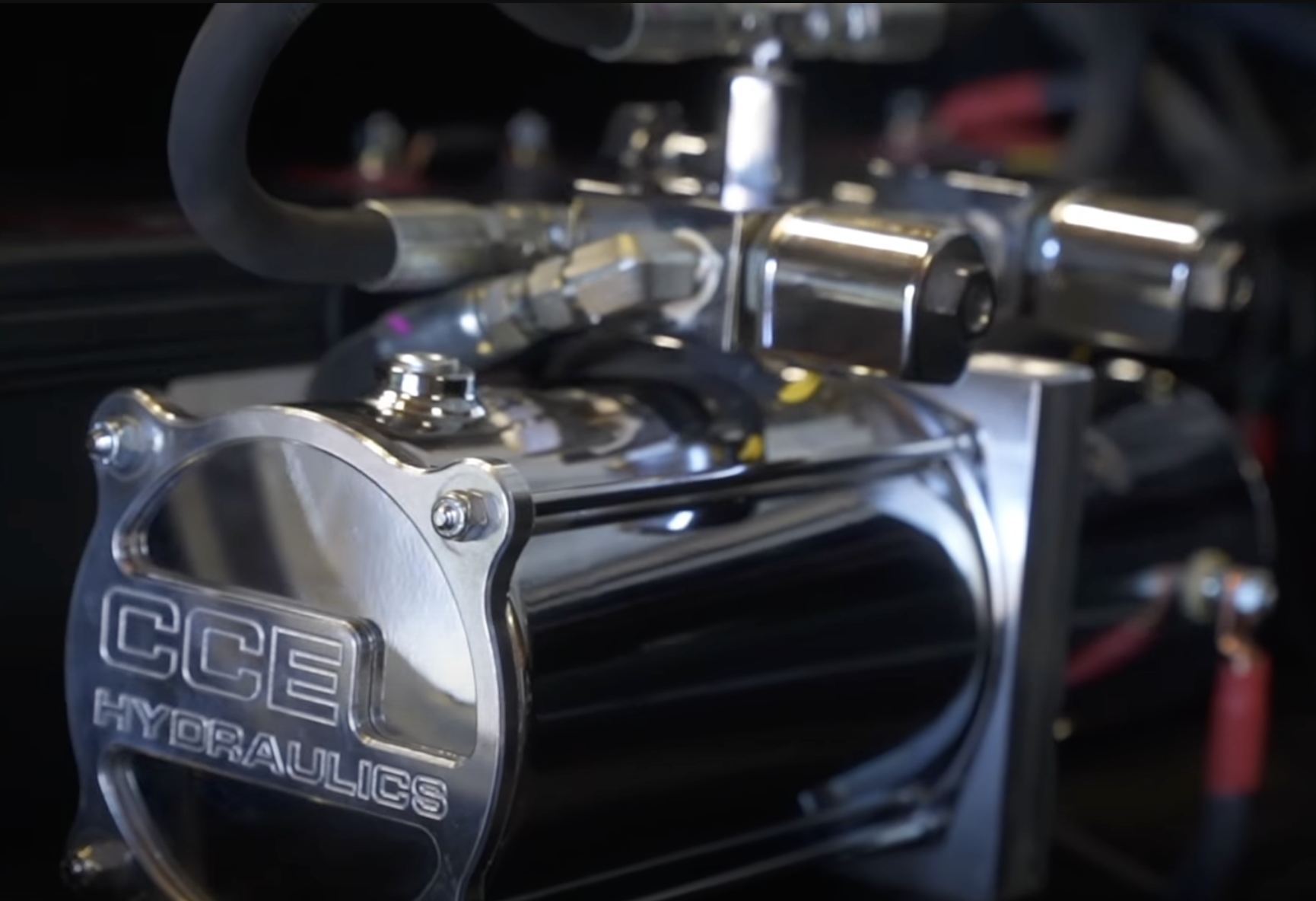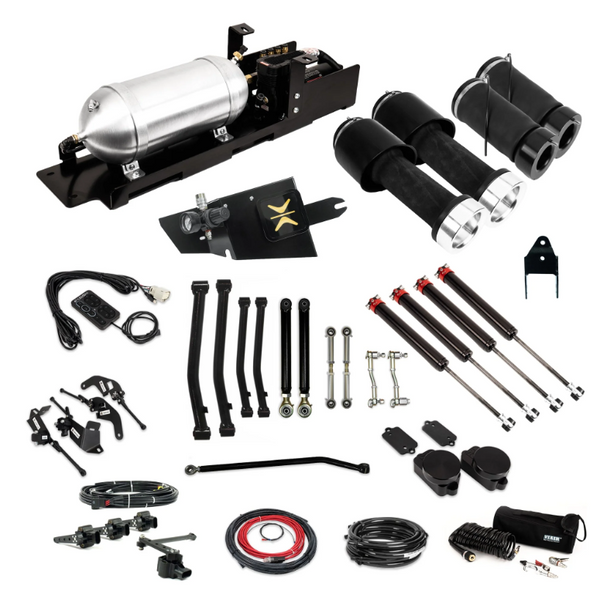One thing we see a lot around these parts is airbags. Obviously it’s kind of our thing, so it’s pretty understandable that we’d get a lot of questions about the topic. And one of them is this: How do airbags work with towing?
Now if your truck is fully bagged, you’d get one answer. But if you’re a dude that’s walked through the front door with an F-350 and a fifth-wheel on the back, then you’ll want a different recommendation. And this article is going to be for those latter people, because there are a few misconceptions out there about how airbags and towing works, and we want to sort them out.
How the system works.
If your truck is bagged, then you know the drill: Your airbags provide the up-and-down motion for your vehicle, suspend the weight and carry the load. They are fully height-adjustable coils essentially, which means that your towing capacity is not only based on how your bags are rated, but where they’re mounted, what your truck’s brakes are like and a ton of other variables.
But that guy with the F-350 already has a suspension. Leaf springs hold up the weight of the vehicle in the rear, and he’s likely got the brakes and engine to pull a house off the foundation. What does an airbag setup do for him?
Well let’s go to the suspension itself. These types of setups are often “load levelers,” in that they don’t do anything to change the original suspension; the leaf spring is still supporting the truck. Instead, these airbags are mounted on top of the axle on one side and to the frame on the other. Most of the time they’ll probably be empty, just chillin’ in the back while the truck cruises down the road. But when needed, they’ll add something extra.
To do that, you have to fill the airbags, and there are a few different methods. If it’s something you plan on doing regularly, you can consider an onboard compressor and tank. In this way you can build up and store air pressure in your truck, and have it all ready to go in the bags at the flick of a switch. You’ll need one of those, too — a simple paddle switch with a gauge is common, but some people go all out with fancy controllers and the like.
What do airbags do for your towing?
Airbags solve a pretty common problem for people connecting to a trailer. Ever seen a truck that’s so dropped down in the back that the headlights seem to be illuminating the sky? It’s an unsafe way to operate your vehicle. The front end doesn’t have as much weight on it, so stopping will put more stress on the system. The driver can’t see well, so there’s that, and overall it’s just an unsafe way to drive.
The fix is airbags. By installing a pair in the manner explained above, the back end can lift up higher, keeping those tires planted on terra firma. It’s safer that way, and ensures that whatever you’re trailering will get home safer.
But does it add to your towing capacity? Nope. All it does is help level out the truck. That’s because your towing capacity isn’t just determined by the amount of weight the back of your truck can hold, and adding airbags doesn’t change your brakes, frame or anything else.
So why would I want to add airbags for towing?
Safety, really. See, one important thing about towing is that you want to keep things in balance. Your tow vehicle should sit level at all times, including under a load, and your trailer should be level as well. If your truck is pointing up towards the sky, well, like we said before, stopping becomes a problem.
Airbags then even things out in a literal sense. They give you the ability to lift up the rear of your truck on demand, and that’s nice.
What do I need to add airbags to my tow rig?
Start with the basics: We sell a lot of rear air bag helper kits tailored for a wide variety of vehicles. It’s ideal if you can get one for your specific model, but feel free to give us a call if you have any questions, and we can get you sorted out.
After that, you want to start looking at air management. Now technically you don’t need anything; a schraeder valve in the back bumper and your home compressor will get the job done. But if you want to be sure that you’re not going to have problems with air supply along the way, consider an onboard compressor and tank. We’ve got a few options there, too.
At the end of the day, towing safely is a big deal. Will a helper bag kit make your truck a safer tow rig? It sure has the potential to, and that alone is worth the cost.







